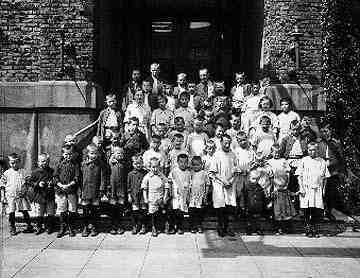
Figure 1.--These French orphans wear a variety of clothes. Notice that the older boys wear smocks. |

As badly off as the working children discussed often were, there was another class of children in even more desperatre conditions. There were families where the adults were often unable to support themselves, ldet alone the children. Victorian England had a relief system for these families--the work house. Most viewed these work houses with dread. Some children were actually abandoned by their parents. In some cases the parents died. More commonly if the father died or run away, it was very difficult for a single mother to support herself, let alone her children. There were few jobs available for women in the 19th century and many jobs that were available, especially working as a servant, did not allow for children. Street children were a terrible problem in England and other Europdean countries, here institutions like orphanages and the ragged school were created woth the intentions of meeting their needs. Various charity institutions appeared in the late 19th century and continued through the mid-20th century. Many had no uniforms and simply wore their own or donated clothing. This was especially common in America. Many European institutions, however, did require uniforms. Smocks were common on the Continent, but
such uniforms varied from country to country.
Much of HBC deals with middle class and affluent children and the often stylish clothes they wore. These styles are the ones that often reflected the tempor of the times. HBC would be remiss, however without addressing the clothes worn by the children even in the early 20th century which had to work on the farm and in mills, mines and factories in often dreadful conditions.
The styles of clothes were very simple and changed relatively little, but any assessment of boyhood clothes has to address these gutsy children who marched off to work because their families could not afford to feed them
and send them to school. The photographic record here played an important role in addressing the pattern of exploitation to which these children were subjected.
Currently we only havde a page on English street children. We believe that this was a oproblem throughout Europe, America and Canada, and other countries. We are not sure to what extent the problem in England compared to other countries. The availavility of inforamion suggests that it may have been greater, but pergaps the English just opublicized it more in an effort to address the problem.
|
Western countries in the late 18th and early 19th centuries created new institutions to deal with increasing numbers of indigents that appeared with the new developing industrial economies. Industry created great wealth, but not all benefitted equally. Many workers found themselves left desperately poor. Many parents, especially unwed mothers, were unable to care for their children. This insitutuiins needed to be developed to care for the indigent, especially indigent children. Some of the instutioins are well known, others less so, The work houses and orphanages that resulted were the first modern efforts to deal with poverty and indegence. Many of the first such institutions were dreadful places often placing the healt of the individual in greater danger than before he or she entered.
Modern orphanages appeared in various European countries and the United States in the 19th Century. Substantial numbers of children were raised at state homes in America and orphanages throughout Europe. Modern approaches have involved placing children as foster children. Orphanages still exist, but the number of children involved are much reduced. Clothes worn by
orphans have generally reflected clothes worn by
children from families with moderate means. In America this meant that
actual uniforms were unusual. In Europe smocks were commonly worn in
France and Belgium.
A sanitorium is a kind of hospital or residential treatment facility for people with chronic illnesses, especially tuberculosis. These facilities can be both state run and private facilities. Some were specidficially for children. The French film "Murmer of the Heart" has scenes from such a facility. Similar facilities were known as rest homes. These were commonly facilities for the aged, but there were some for children as well. A German reader tells us about children doing rest cures. We are not yet sure what this was about.
Work houses for the indigent were established in England during the
early 19th Century. These were very bleak institutions. Food intake
was often less than in prisons. Most had uniforms for the children
who were separated from their parents. In addition, the cramed liiving conditions of people often already weakened from malnutrition made these facilities deadly breeding grounds for contageous diseases at a time that medical science did not understand the importance of sanitation how diseases were spreads my germs. This proved to be especially true of Ireland in the 1840s where the population was ravaged by the Potato famine.
HBC has only limited information on charity institutions around the world. We have managed to collect information on England and the United States. Information on other countries has been more limited to obtain. Charity institutions, however, were not confoned to Englnd and the United States. HBC believes that the available information is primarily a function of greater access to English-language sources. This is, however, not the only factor. Another important indicator to consider is national wealth. The richer countties were more capable of addressing the problems of poverty ands indigent childred. We have found some information on charity information on other countris. Very limited information is currently available on the clothes worn at orphanages in diifferent countries:
Navigate the Historic Boys' Clothing Web Site:
[Return to Main institutional page]
[Return to Main World War II page]
[Introduction]
[Activities]
[Biographies]
[Chronology]
[Clothing styles]
[Countries]
[Bibliographies]
[Contributions]
[FAQs]
[Glossary]
[Images]
[Links]
[Registration]
[Tools]
[Boys' Clothing Home]
